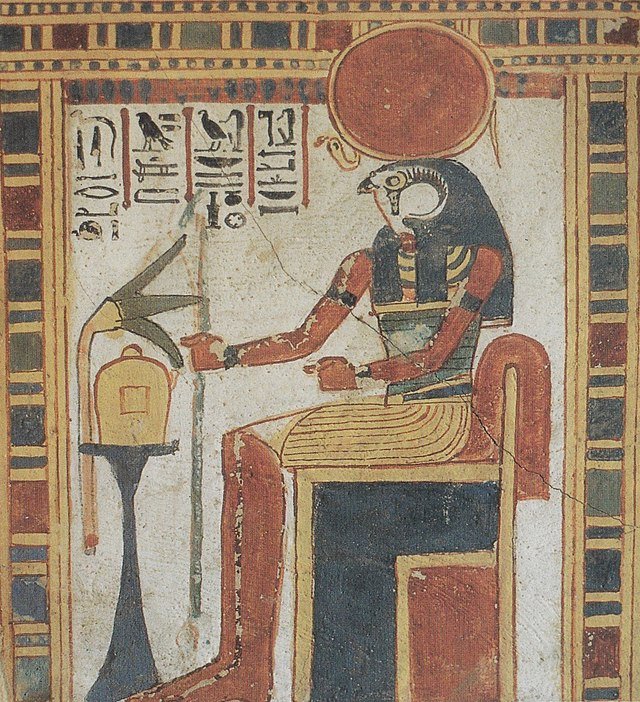The origins of the halo in art
Halo, glory, nimbus, gloriole – whatever you choose to call it, this glowing disc of light has become a ubiquitous visual symbol of spiritual goodness. But what’s the origin of the halo in art, and why its enduring appeal?
Dark is bad, light is good
Let’s start with us humans. For ancient peoples struggling to survive, darkness is bad. Darkness is hidden dangers; it’s winter and the very real suffering and privations accompanying it. Conversely, light is good – it’s the sun, warmth, clarity, the ability to see, the abundance of summer. It’s not surprising then that most early civilizations worshiped the sun – the most powerful natural source of light and warmth.
Given the human tendency to extrapolate, it's a relatively small leap from a luminescent disc of goodness that feeds the earth (the all-powerful sun), to a luminescent disc representing spiritual goodness that feeds the soul (the halo). Let’s see how this leap was helped along the way.
From sun to halo
From as far back as the 2000s BCE, we see halo-like precursors in some ancient art traditions. For example, in Ancient Egypt, the sun god Ra was depicted with a solar disc hovering above (not around) his head. Meanwhile, artefacts recovered from the Indus valley from the 2,000s BC depict what appear to be rayed auras, although these surround the entire body. Similarly in Ancient Greece, deities including Helios (Titian god of the sun) and Apollo (god of light) and heroes are shown with rayed crowns of light.
Ra Enthroned in the Tomb of Roy
The earliest example of a disc halo appears to come from the 300s BC in the religious art of ancient Iran. Here Mithra (the Zoroastrian god of light) is shown in what appears to be the first instance of a disc halo. For the Zoroastrians, the radiance of the sun and divine glory were closely connected, with the halo as the chosen symbolic link.
The spread, endurance and appeal of the halo
What’s surprising in terms of art history is the speed with which the disc halo spread, and the distance it covered, from the first disc halo of Iran’s Mithra in the 300s BC, west to Tunisia and Turkey and east as far as Pakistan by the 100s AD.
By the 400s, the halo had become firmly embedded in both Christian art in Rome and Buddhist art in China, where it remains to this day.
Simon Ushakov, Last Supper, 1685
The rapid spread of the halo was facilitated both by invasion - with its imposition of religious iconography and ideas - and the trade routes linking east to west in late antiquity and the Middle Ages. Known as the ‘Silk Roads’ (after the luxury goods that were transported along them), they also provided routes for the more willing exchange of religions, ideas and images.
And yet visual symbolism doesn’t tend to catch on so widely unless it resonates deeply with the people who see it. I can’t help feeling that our shared experience of the sun – the radiant disc supplying the most powerful light, warmth and energy that any of us will ever experience – means that humans all over the world can intuitively understand the halo without its meaning having to be explained.
And that makes for an enduring symbol.
Add to that the warm glow we feel when standing in the presence of someone who emanates spiritual goodness (or good will), and it’s a symbol we can all relate to.
So in this season of lingering darkness, here’s to the light!
Keep scrolling for the extra bit… The many shapes of the Christian halo…
The extra bit – the many shapes of the Christian halo…
There are at least eight different types of halo in Christian art. Here’s a rundown:
1. The disc or full rounded halo
Generally used for the Virgin Mary, saints, angels and prophets. ‘Sometimes a band of small stars is used for the Virgin (some argue that this is a throwback to earlier images of pagan goddesses like Astarte who were depicted with similar devices).’ (Rev I. Mittens, London UK)
Virgin and Child with Saints and Angels, circa 1340 - 1345 (Middle Ages), Walters Art Museum
2. Square halo
Given to living saints, it’s symbolic of the material world.
Pope Paschalis I - circa 822 - mosaic, Basilica di Santa Prassede, Rome
3. Triangular halo
Used for God to represent the holy trinity.
Sabaoth Icon (South Russia, 1850-80, private collection, Germany)
4. Polygonal halo
These are worn by personifications of virtues such as hope, charity and faith
5. Cruciform Halo
‘A halo with a cross inscribed in it (or cruciform aureole) denotes Christ’ (The National Gallery Glossary). The cross if often outlined in red within a gold disc halo.
Christ surrounded by angels and saints, 526 AD, Basilica of Sant'Apollinare Nuovo in Ravenna, Italy
6. Radiating halo:
‘Beautified figures, not yet canonised as saints, are sometimes shown in medieval Italian art with linear rays radiating out from the head, but no circular edge of the nimbus defined; later this became a less obtrusive form of halo that could be used for all figures. ‘ (Wikipedia)
7. Thin band halo:
This seems to have emerged with increasing realisim in art, as a more conservative version of the the disc halo.
8. Full body halo (aureole, glory or mandorla)
This surrounds the whole body and is usually painted in gold around Mary or Jesus. Mandorla is the Italian word for almond.
Further reading
Wikipedia: Halo (religious iconography)
BBC Culture: The Halo - A symbol that spread around the world









